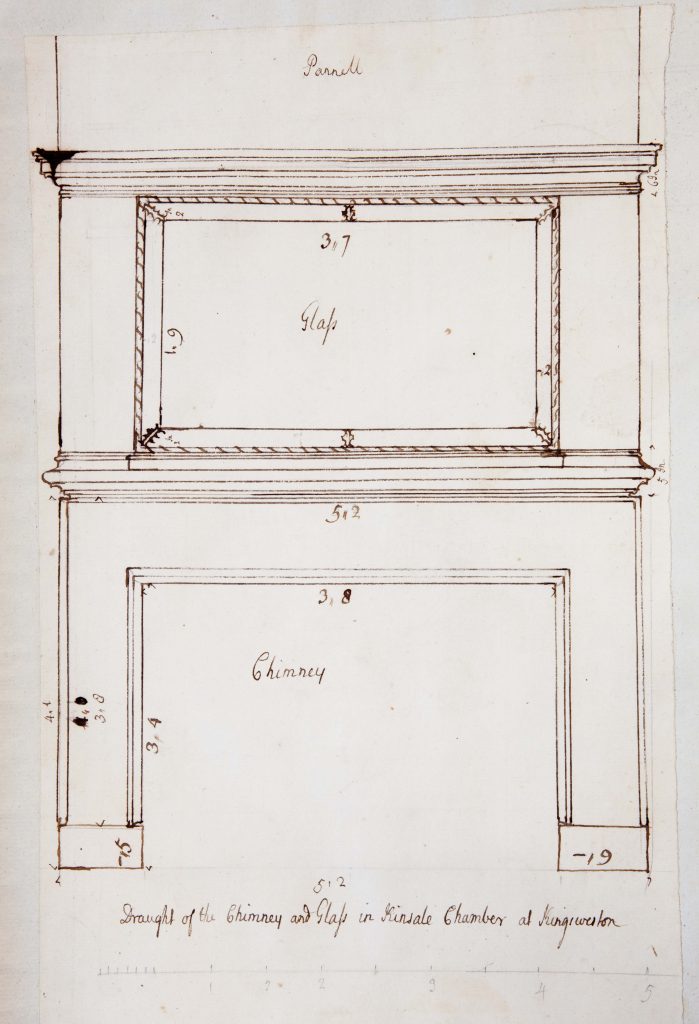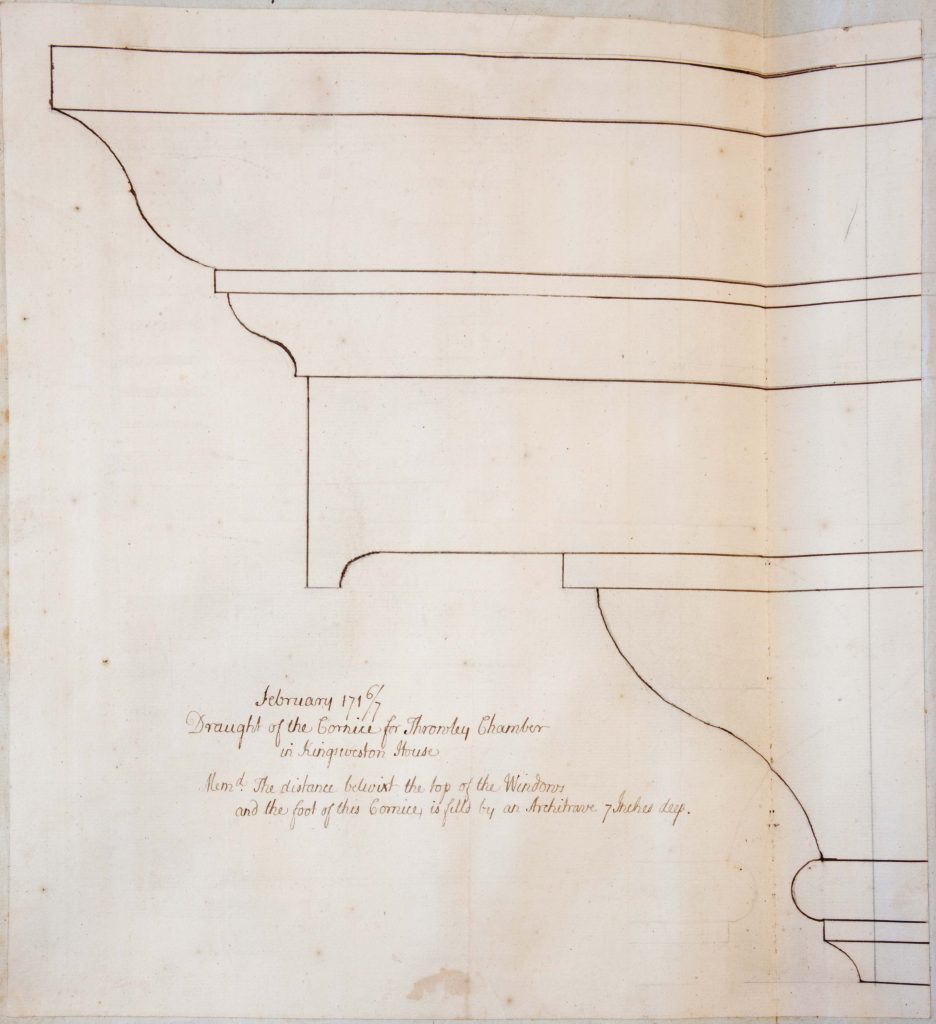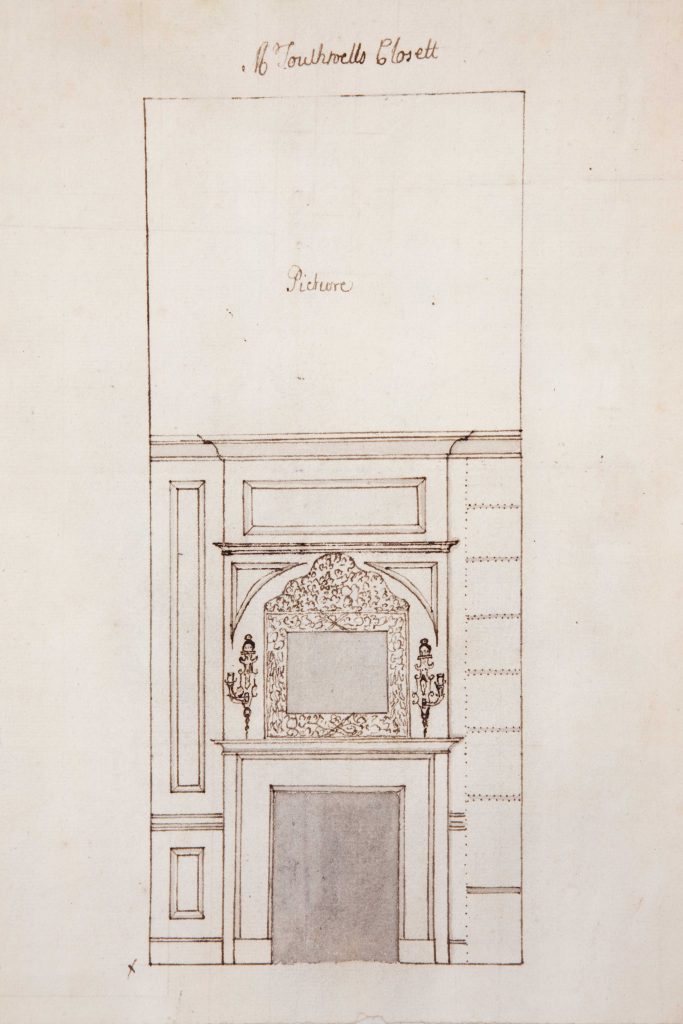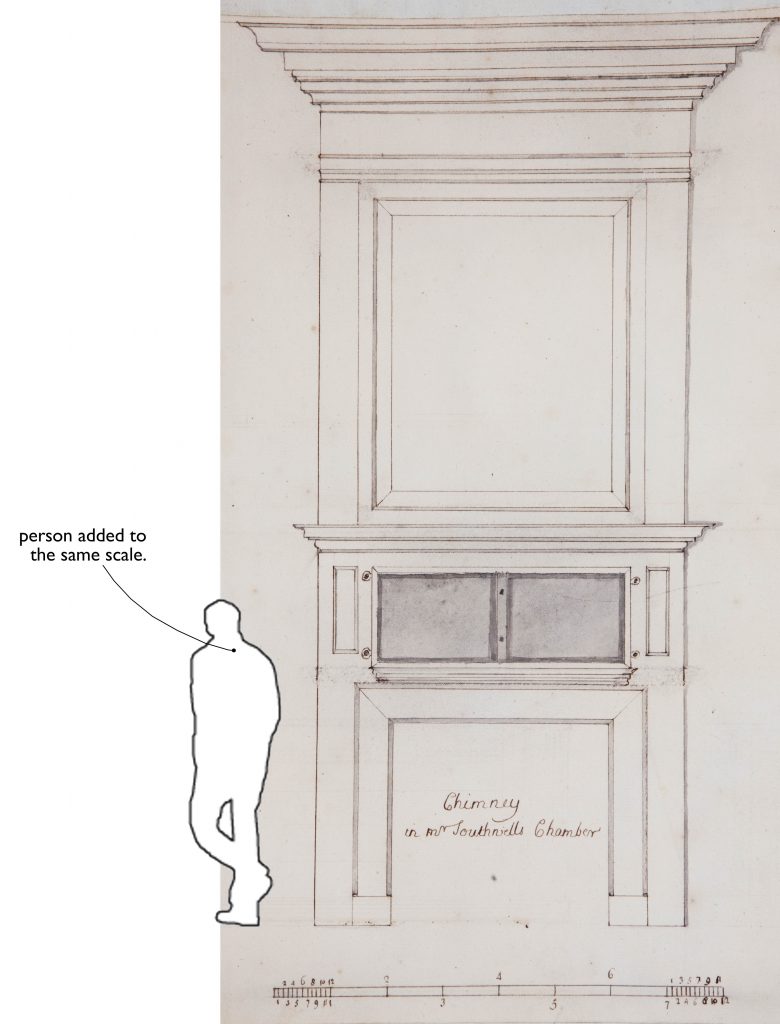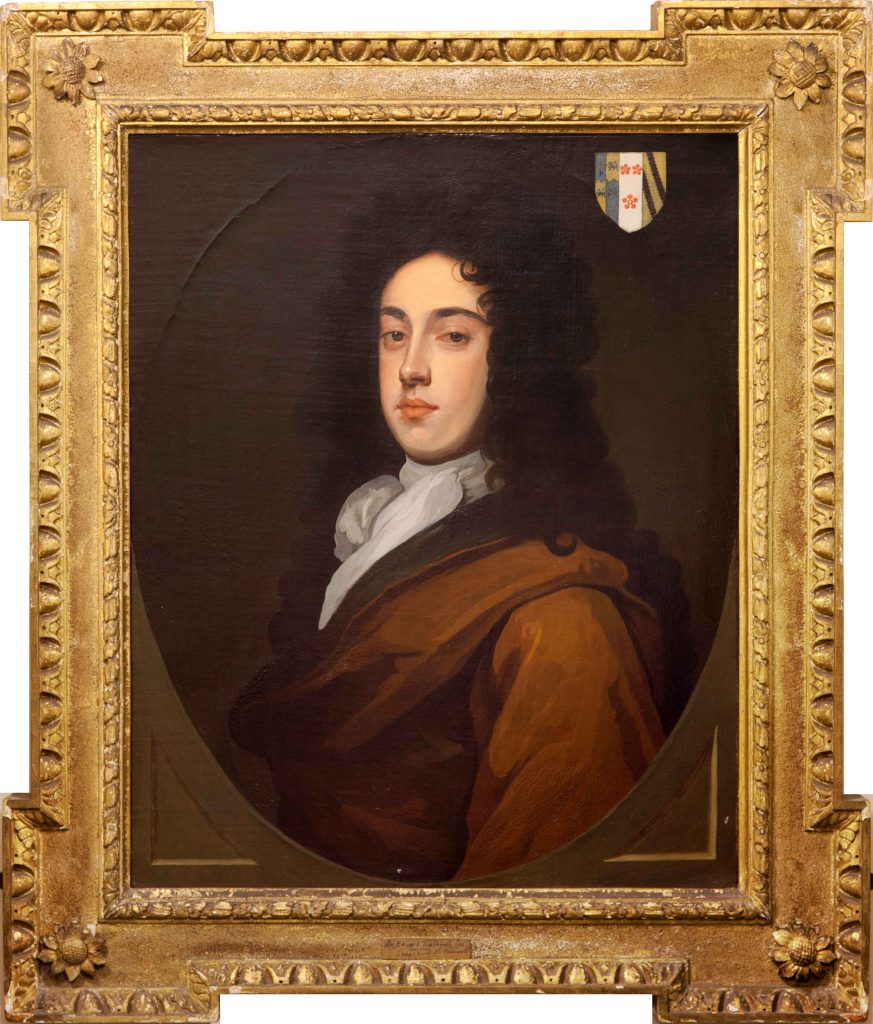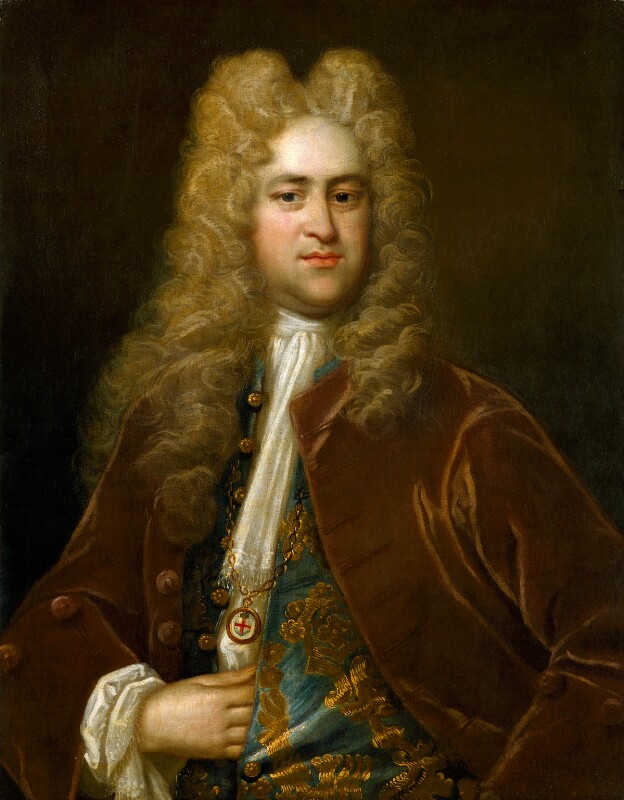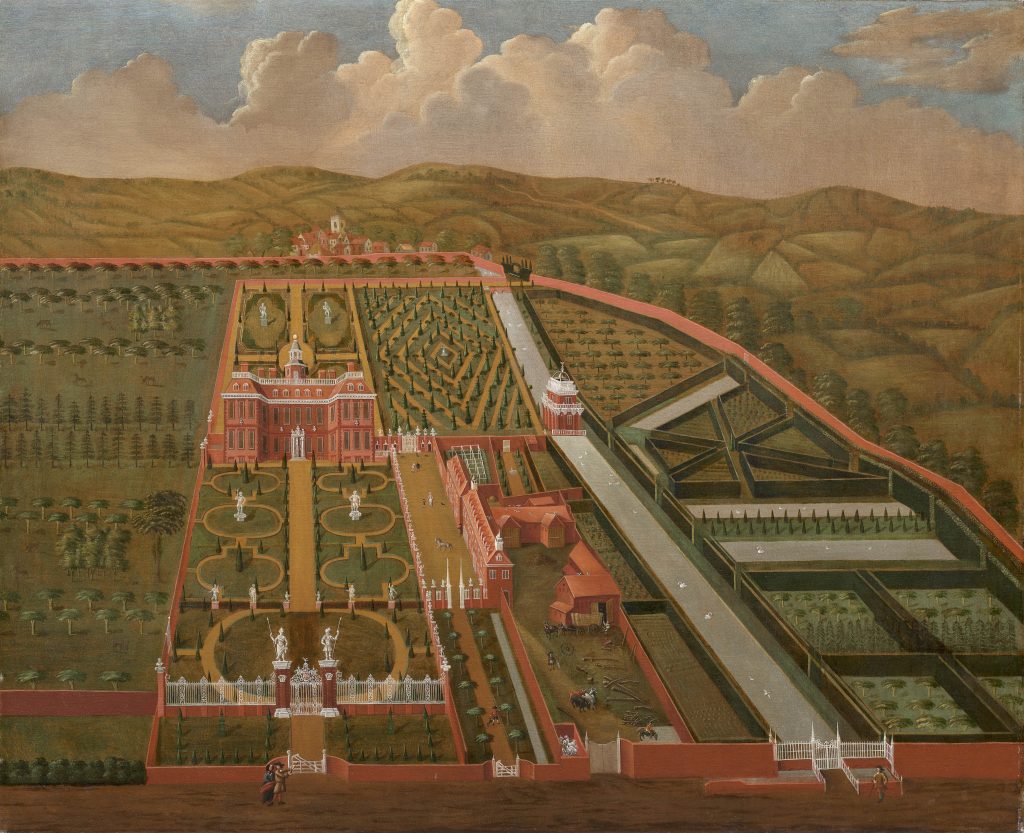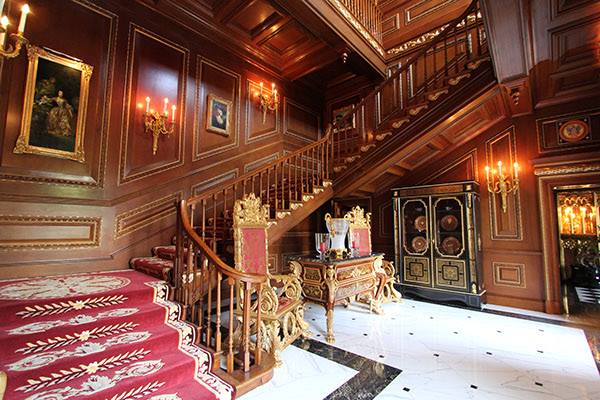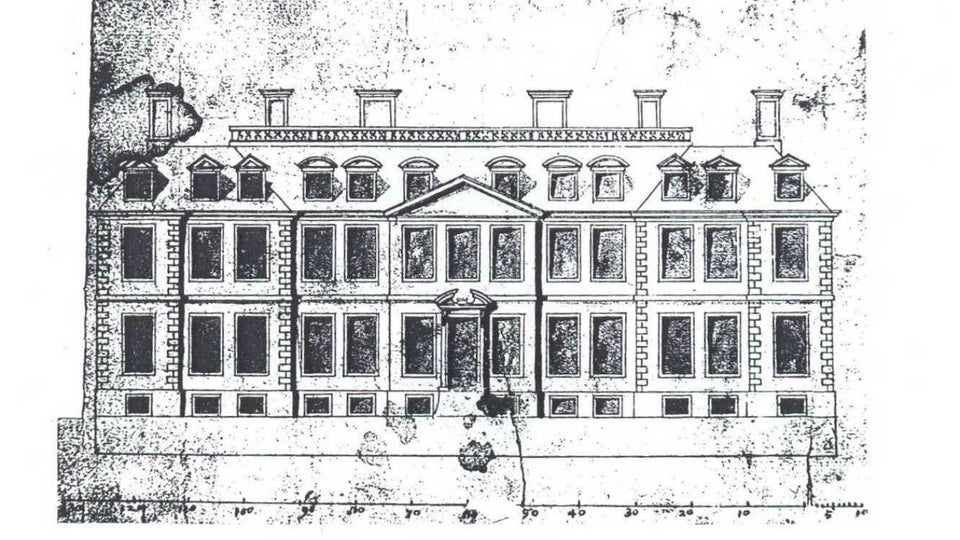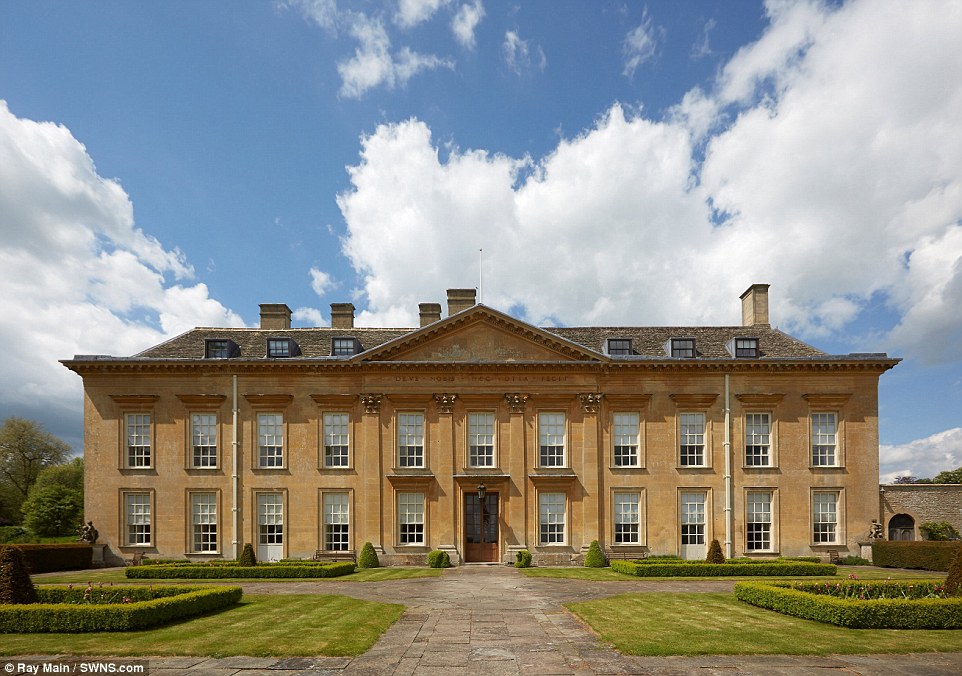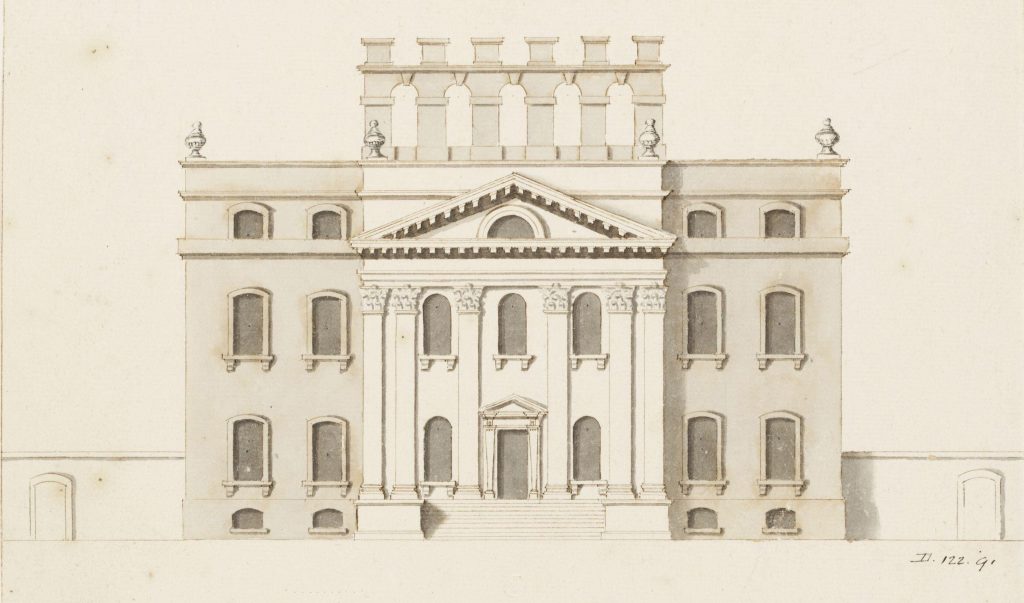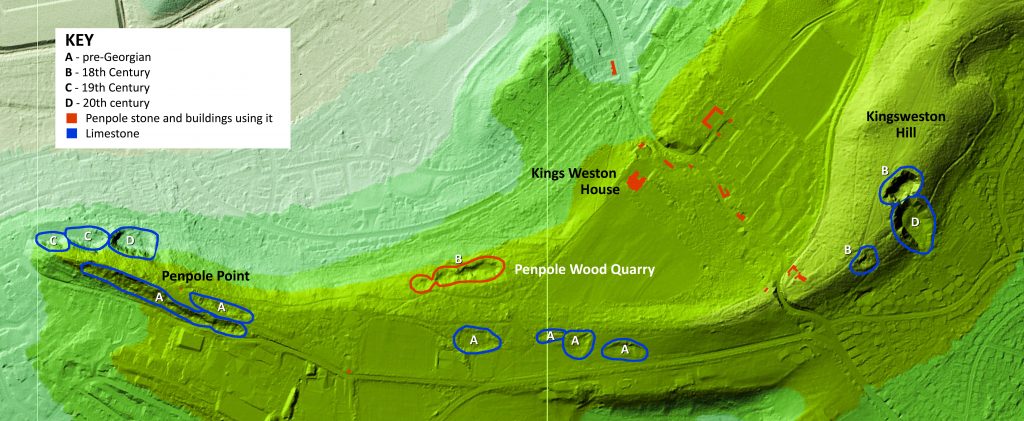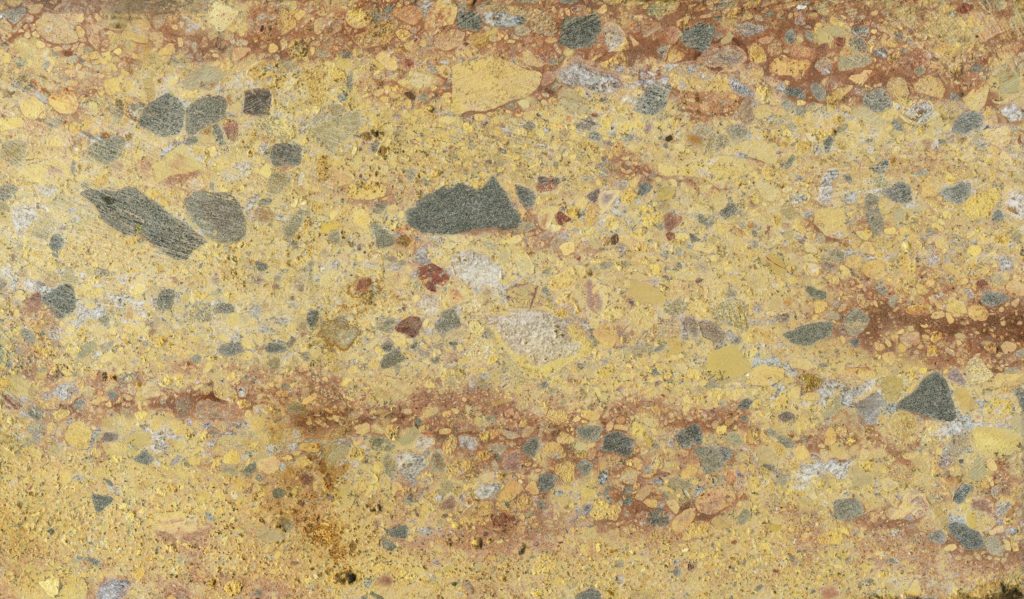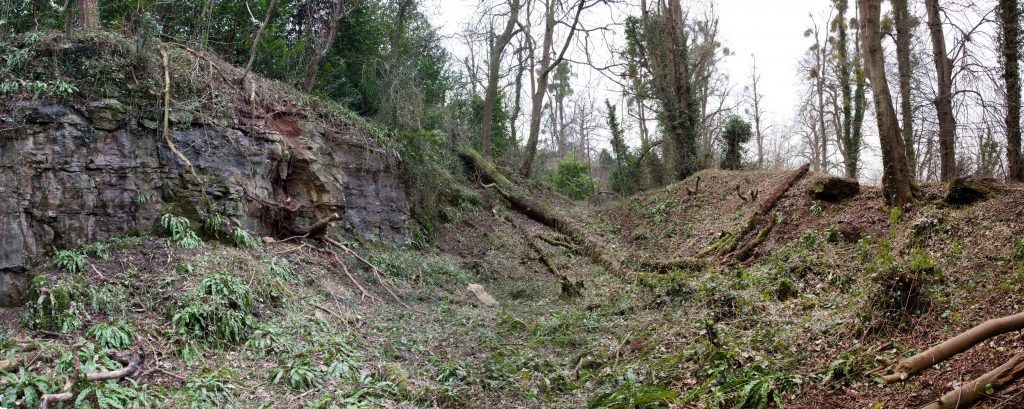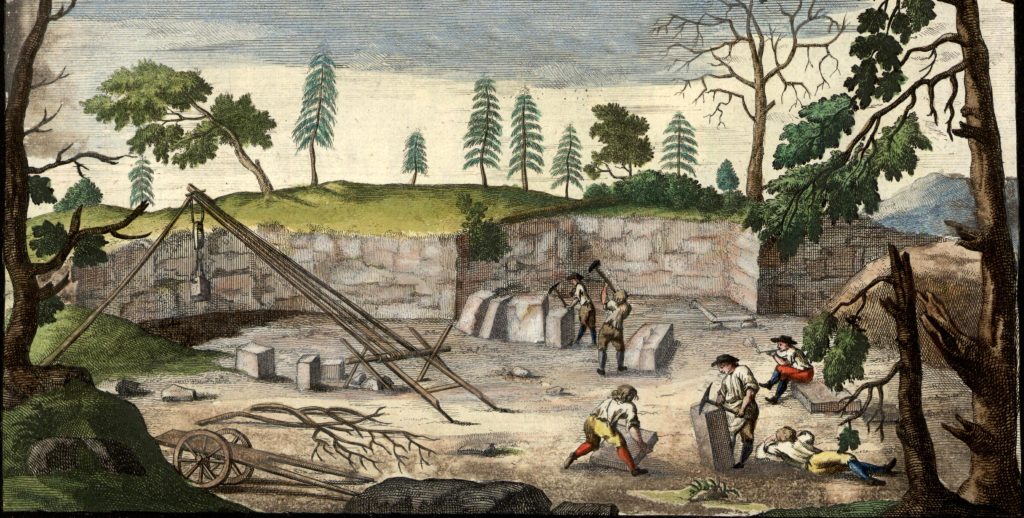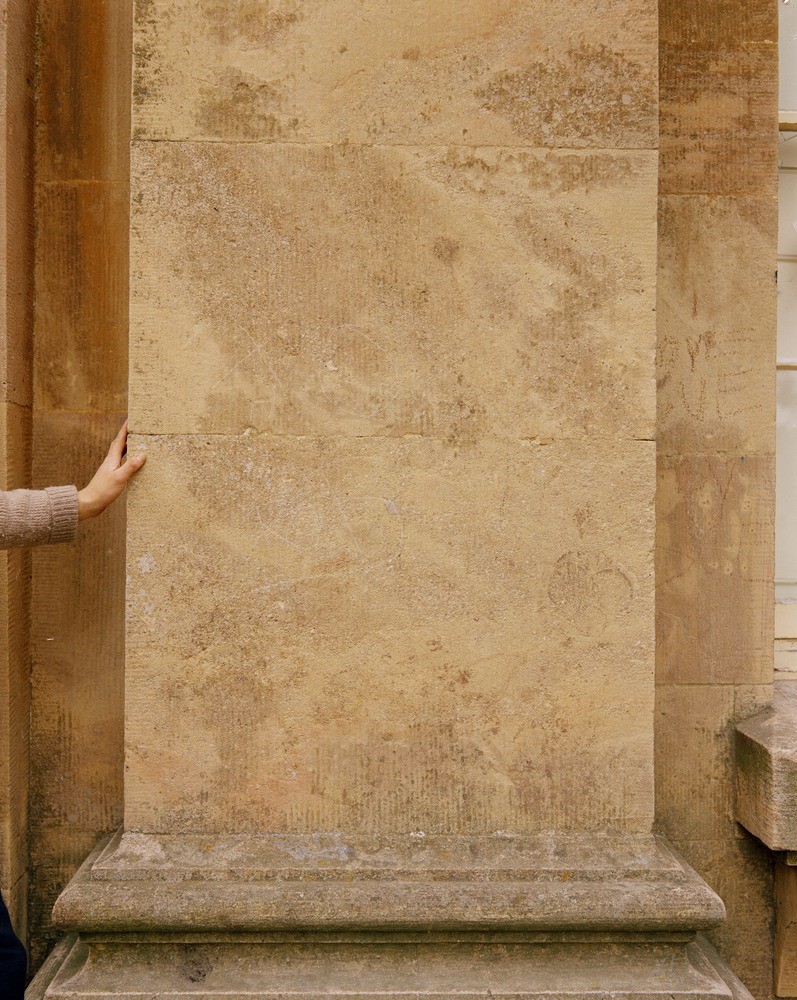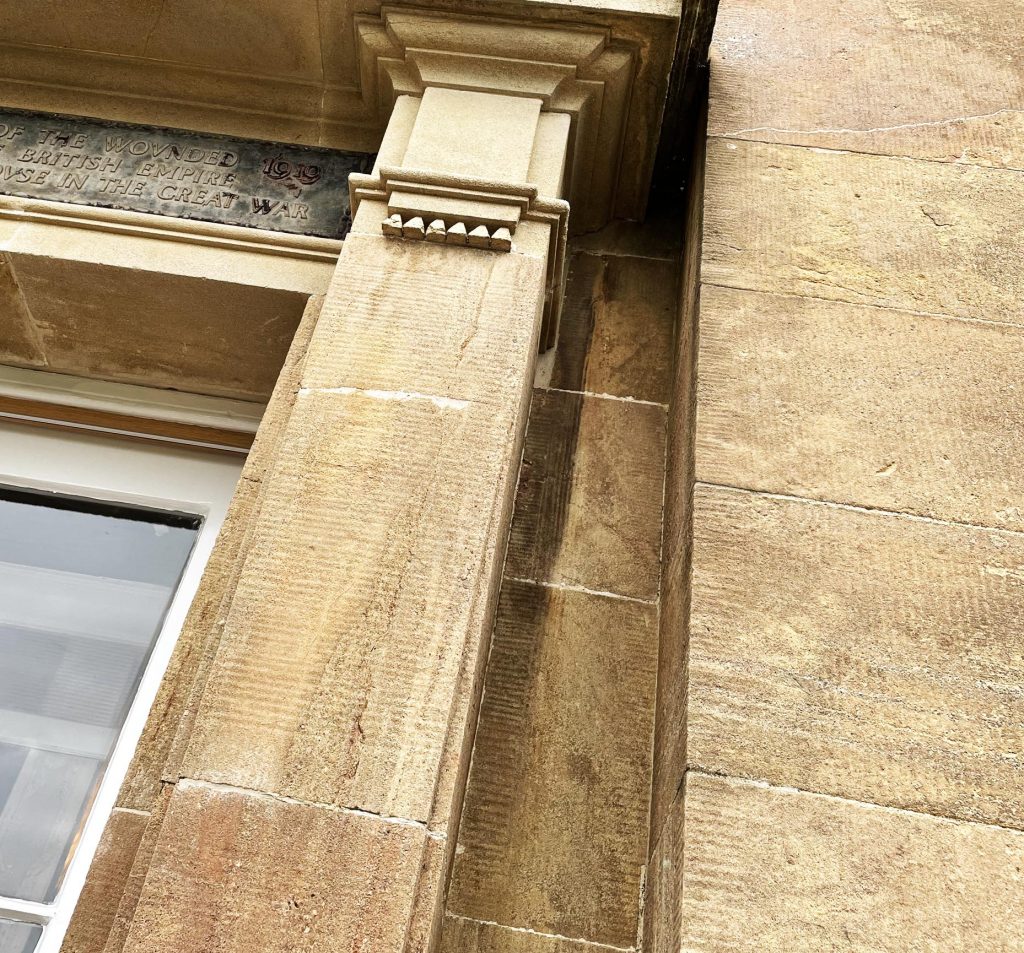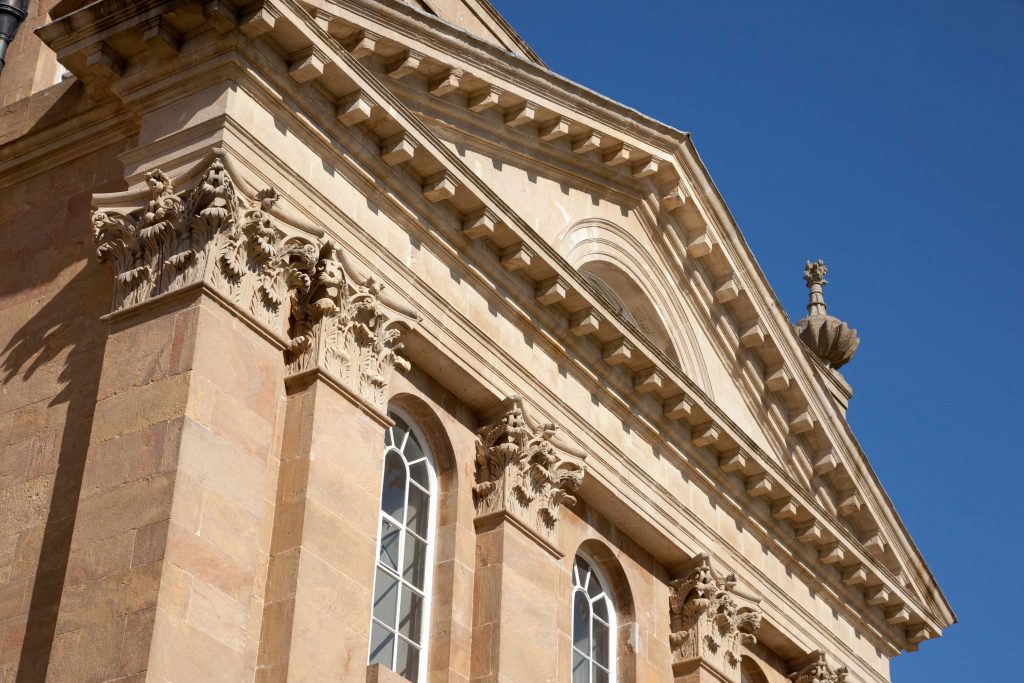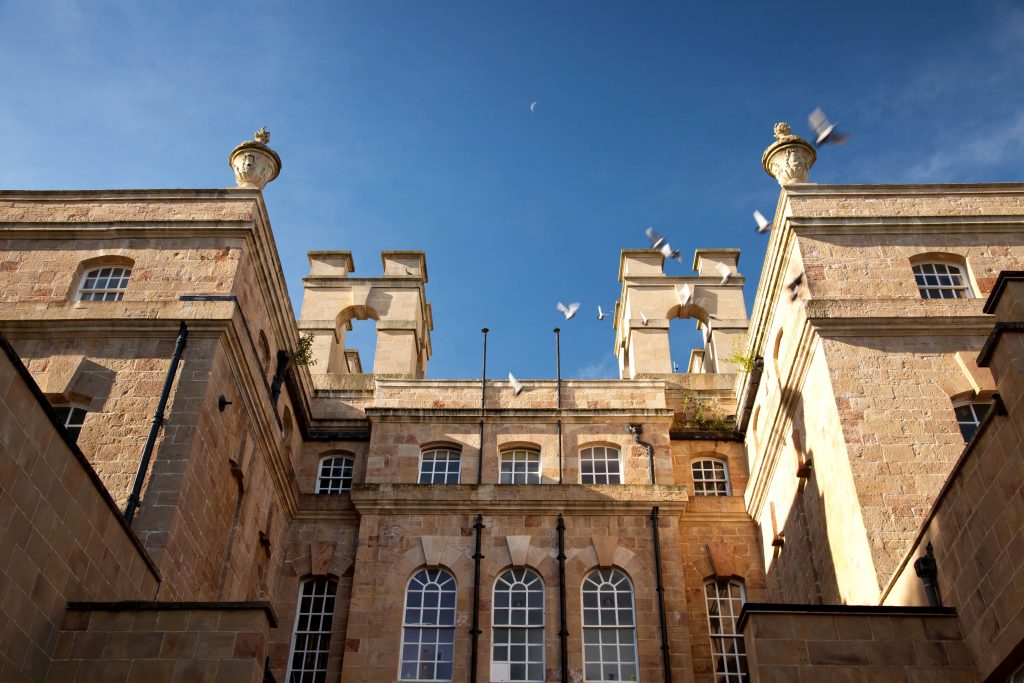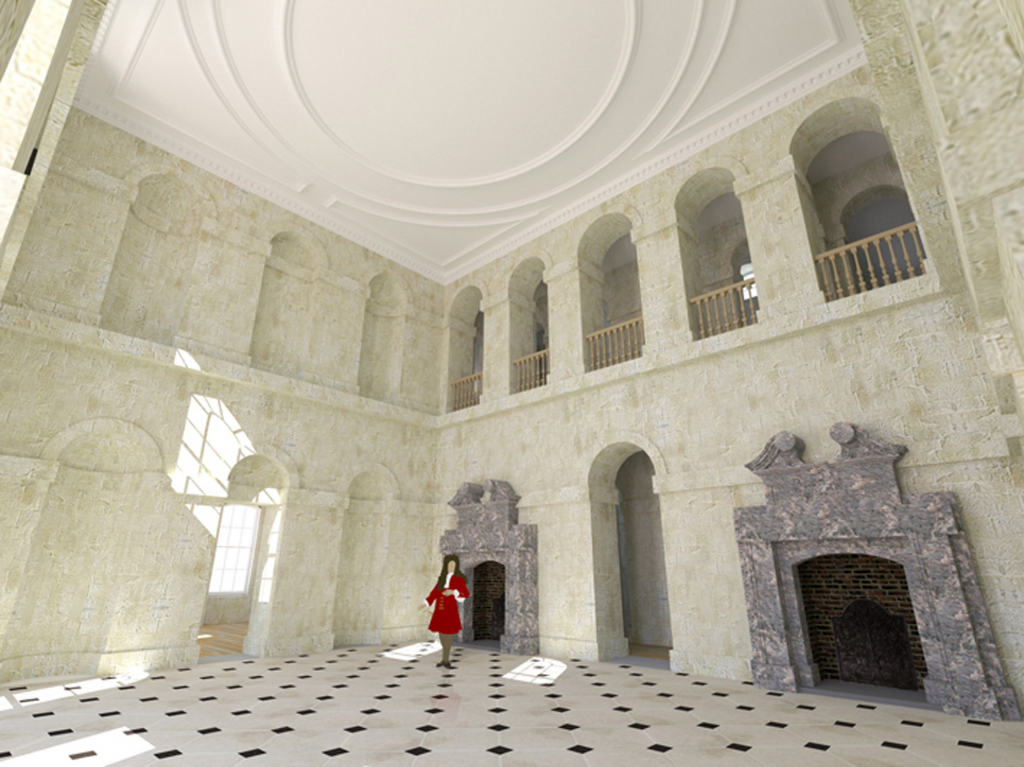We’ve often mentioned the incredible Kings Weston Book of Drawings (KWBoD), a unique collection of architectural drawings documenting the house and its construction and all dated to the first quarter of the 18th Century. The book is in the collections of the Bristol Archives and we’re reproduced drawings from it in many of our newsletters and on our website. One aspect we’ve never looked into is the internal decoration of the house as built. Many will know that the rooms of Kings Weston were all remodelled in the 1760s and later, and scant remains of the original character remain. However, inspecting the drawings gives us an insight into this lost world.
The drawings also give us a puzzle. Whilst we can be certain about the layout and room names and uses after the 1760s, we are less certain over the earlier arrangement. There are rooms named, the Throwley Chamber, Kinsale Chamber, and Eating Parlour, that can’t be precisely located. We can assume that the Eating Parlour would have been on the principal ground floor, but wouldn’t have been in the same location as the later room that bore that name which was formed from the State Bedchamber. The description of several rooms as chambers implies they are, essentially, bedrooms, and most likely on the first floor.
Both Kinsale and Throwley chambers are named after the Southwell Family estates. Kinsale in southern Ireland was where the Southwell’s’ heralded from before Kings Weston, and Throwley Old Hall in Staffordshire came into the family through the marriage of Edward Southwell, rebuilder of the house, to Lady Elizabeth Cromwell. A further chamber is referred to in a letter from Edward Southwell in Dec 1713 when he writes ” I have almost forgot what I wrote about the two chimney pieces, but if I remember right I desired one according to the wooden model I sent, which being large was to go into the great parlour. The other I desired for a bedchamber of the common chamber size, and of the Italian moulding if you fit, to put it in the room I call Burton”; Burton was the estate of his cousin John Percival to whom the letter was written. The room names then follow a pattern of representing places of importance to the family.
The drawing for the Throwley chamber illustrates a profile of a ceiling cornice. Comparing it with a similar example at Dyrham Park house, a building with close family bonds with kings Weston, we can assume this was intended to be of timberwork. The Kinsale Chamber drawing contains more of interest. It’s a design for a fire surround and chimney breast that would have been the focal point for this bed chamber. The fireplace is 5ft 2in wide and 4ft 1in high and probably wrought in polished stone or marble. Above it are mouldings, again of timber, framing a wide mirror with cushioned edges. By the level of detail it can be assumed that the mirror was already in existence and the designs were drawn with the intention of incorporating it into the new room. Above the mirror were further cornice mouldings and panel work taking things as far as the ceiling. Again, the arrangement isn’t dissimilar from some of the interiors at Dyrham.
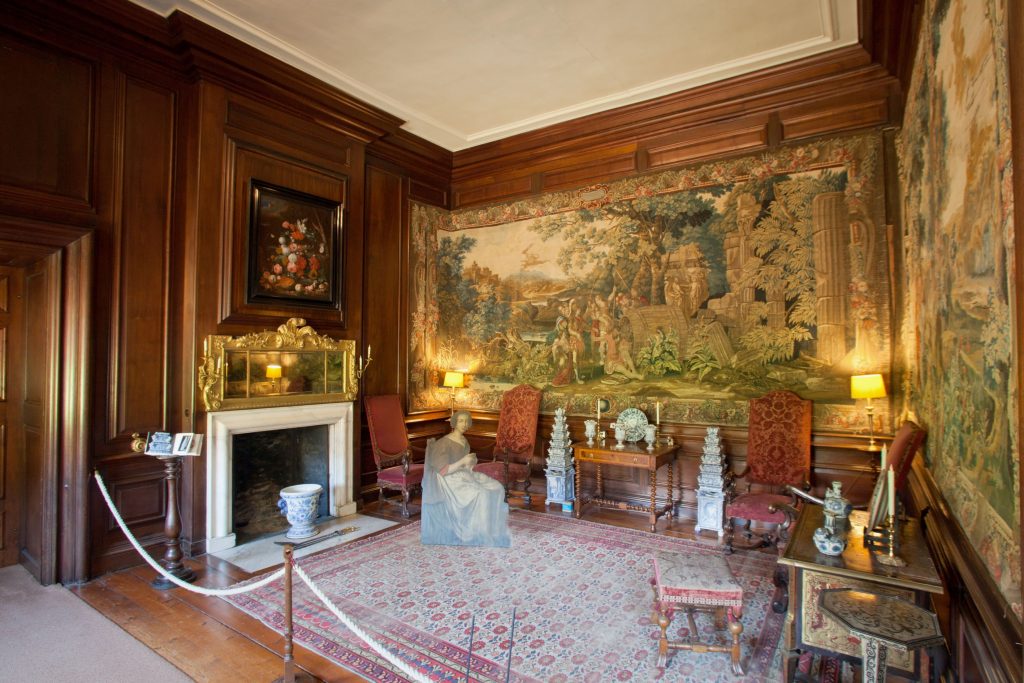
Two drawings can be more firmly located within the house; these are fireplaces for Mr Southwell’s closet and chamber. Aside from the State Bedchamber on the ground floor this would have been the finest furnished rooms. The principal chamber in later eras was in the southern corner of the house, with an outlook over the garden to the Echo. Reviewing the plan of the house published shortly after completion this is most likely to have been intended as Southwell’s bed chamber and private rooms.
The first floor of the house was laid out as a series of apartments which could be allocated to family members or used by guests. There are three apartments on the first floor connected by common anterooms. In the later 18th Century the central anteroom overlooking the Echo Walk was called the Tapestry Room, and it’s possible this interior, with its old fashioned wall hangings, survived the 1760s refurbishments. A smaller bed chamber occupied the western corner of the house directly off the servants stair, but separate and not identifiable as a part of a suite of rooms; Aside from Mr Southwell’s chamber this is the only room shown where there is a pronounced chimney breast, so might be tentatively identified as the Kinsale chamber. The other two bedchambers on this floor had fireplaces flush with the interior wall.
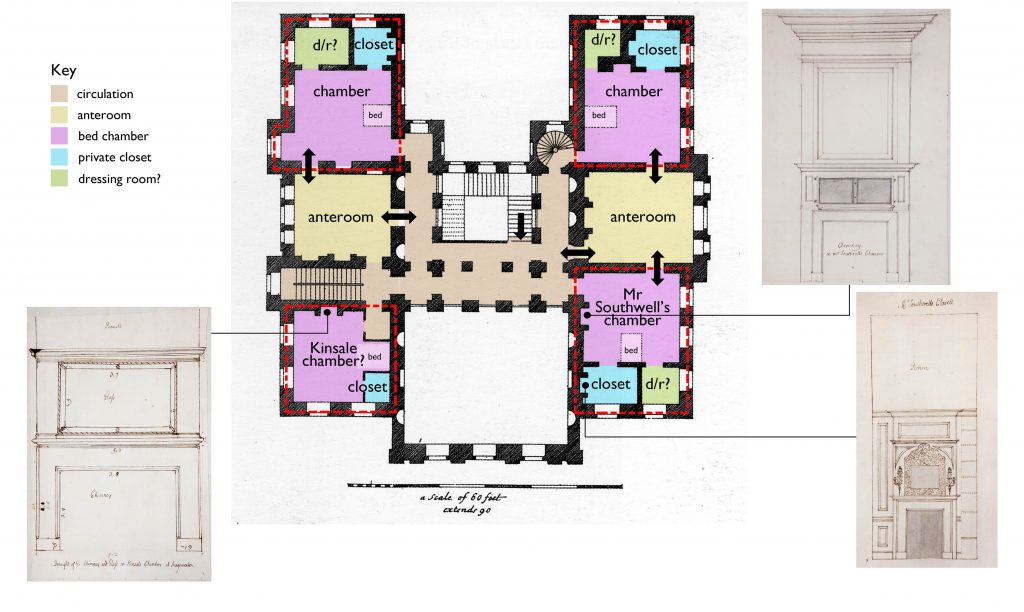
Each apartment consisted of a bedchamber, and two further rooms. The principal of these smaller rooms was equipped with a fireplace, whilst the lesser room was unheated; this was possibly a dressing room. The design for Mr Southwell’s closet is the most decorative of the interior drawings, and this illustrates the status the room enjoyed. The panelling here doesn’t reach the whole height of the room, instead a more intimate character is created by a lower cornice level. The fireplace is shown with ornate decoration, probably carved in wood. The drawing suggests that this incorporates wreathes of foliage framing a central panel, possibly a painting, and a crowning section of more indistinguishable decoration. Either side of this centrepiece candle sconces are fixed. The wall space above the ornamental panelling is reserved for a painting.
The function of the closet was to offer a private retreat for the apartment’s occupant; somewhere they could display their most important treasures and intimate effects. It was a room for display, but only to the most limited of audiences. A good example of this sort of room exists in the Cedar Closet at Tredegar house, Newport, though from about a generation earlier that Edward Southwell’s new house.
The Closet drawing has curious pricked lines on one side of the chimney breast which are not easily explained. They may be an alternative decorative scheme with carved stacked quoins mimicking an architectural detail in stone, or they could intimate shelving concealed behind the panelling.
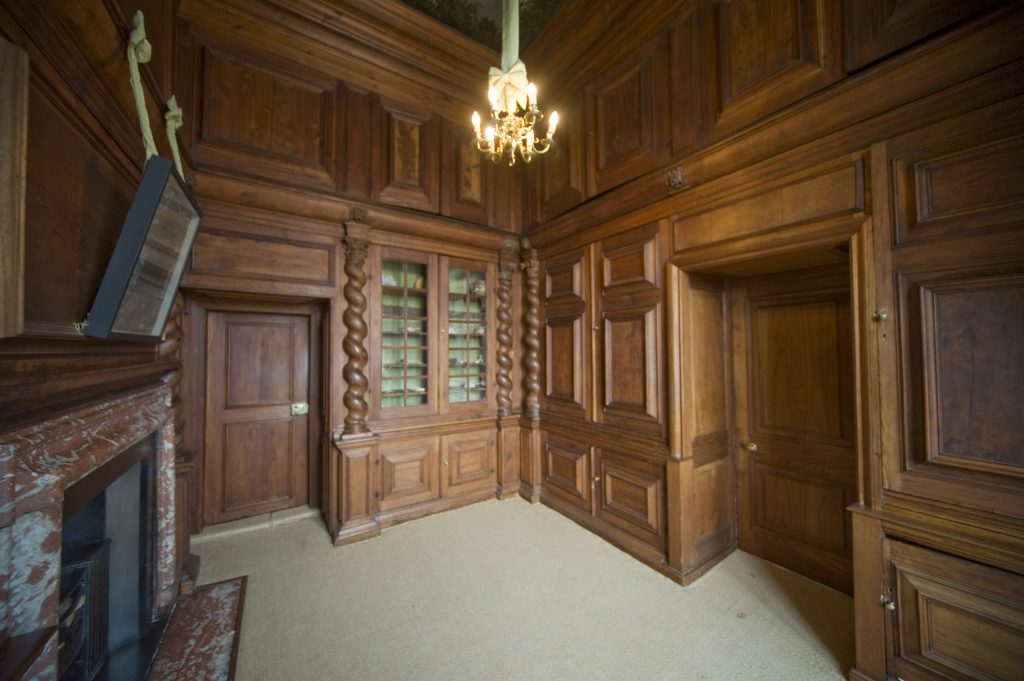
Mr Southwell’s Chamber also has its chimneypiece drawn. This Is a fairly straightforward design with timber panelling up the chimney breast and terminating against the ceiling with a boldly projecting cornice. The focus of this feature was likely to be a painting hung over the narrow mantelpiece. Between this and the stone fire surround there’s a wide panel picked out in grey ink, and with four quite substantial fixings; was this for another painting, or could it have been for a carved stone plaque? The vast scale of the proposed chimney breast is only revealed when a figure is added to the same scale, as we’ve illustrated here.
The last drawing, or drawings, we’ll look at here are of another fire surround, to be “wrought out of the ash colour marble”. A surround in similar grey marble still exists on the second floor. The two drawings clearly show the same fire surround and one is dated 13th Feb 1718. This shows us that, although Southwell moved in with his new wife in 1716, that there were still significant fitting out works being undertaken on rooms. The same dated drawing describes the drawing as a “coppy of Mrs le Grand’s draught of a chimney piece”.
Mrs Helena Le Grand was Edward Southwell’s older sister. He had delegated the setting up of the house to her before he moved in when she was “fully employed in transposing and setting the furniture, pictures and cheney”. The second drawing showing the fireplace may then be her own drawing from which a second version was taken and annotated. Was she more involved in the design of the house, or its interiors than we’ve previously been aware?
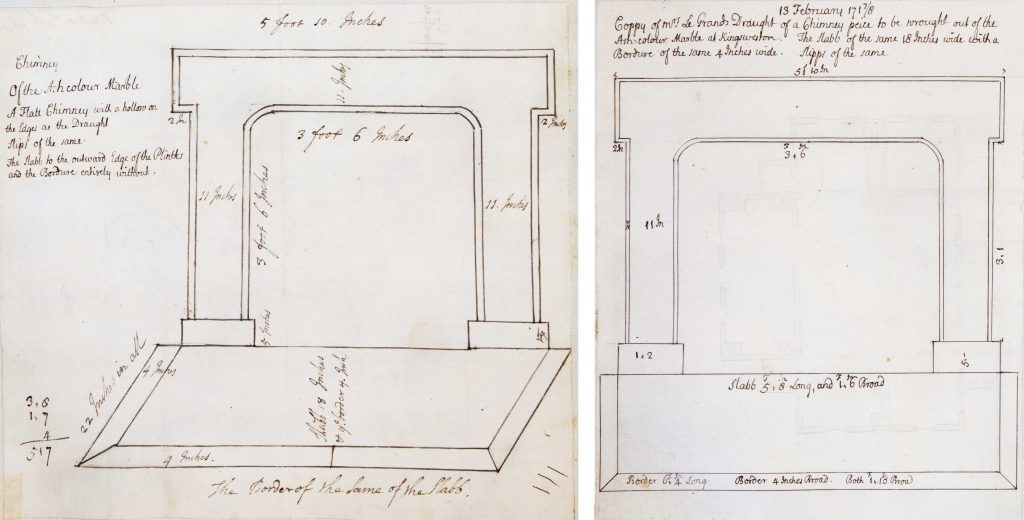
One thing that this short series of drawings show is that the first floor interiors were very traditional, not having the same architectural drama of Sir John Vanbrugh’s exteriors, Saloon or stair hall. The layout and appearance would not have been unusual in a house from thirty years previous like Tredegar. It’s unlikely we’ll ever know how the State rooms on the ground floor were decorated, but the first floor chambers were not ostentatious and would have relied largely on their furnishings for any display of wealth or status.


